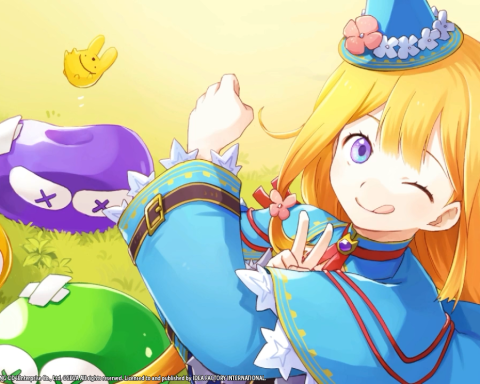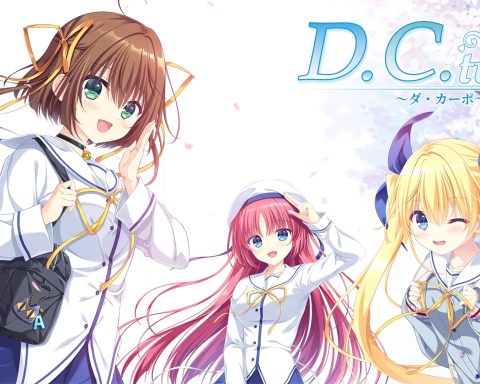One of my first observations about Clair Obscur: Expedition 33, was that it was very, very French. Having no idea about the developer prior to playing it, I immediately said to myself, “This is a French game.” Then I saw all the jokes about it being a “J’RPG” and realised that my intuition was spot on. When you think about it, we don’t get that many games that are so clearly part of the French artistic tradition that they are cultural artifacts. Sure, Ubisoft is a French company, but does anyone really think of Assassin’s Creed as “French artworks”? Spiders and Cyanide are both great developers, but I’d never call the likes of GreedFall identifiably French, either. But Clair Obscur is very French.
There has already been so much written about how great this game is, so I’m not going to really stand out and litigate for the game’s quality again. By now, if you have any interest in the JRPG genre (and are therefore likely a reader of DDNet), and you haven’t yet played the game yourself, then you surely know a bit about it. It’s blatantly inspired by a range of genre classics as broad as Final Fantasy X, Lost Odyssey and FromSoftware’s Souls series. It has one of the greatest soundtracks you’ll ever have the pleasure of listening to, some of the most eye-openingly beautiful art direction, and a turn-based combat system that flows beautifully, being both tactically nuanced and making good use of parry and dodge mechanics.
Basically, Clair Obscur is one of those rare JRPGs made in the West – there’s no overt desire to “save” or “fix” the genre. Everyone involved in this project clearly loves JRPGs, and set out to contribute to, not redefine, the genre. The result is a hugely playable, engrossing game, and one of the finest JRPGs you’ll play this decade.

Again, I’m not here to litigate on what a lot of other critics have already done admirably. I’m late to the party with this review (sadly, I was not the beneficiary of a pre-release copy, so I had to buy it myself at launch). Rather than try and cover the usual review grounds, I would like to use my little corner of the discourse to talk about why Clair Obscur is so recognisably French. You can point to some of the art direction, perhaps, given that it’s inspired by the Belle Époque period, but in my view, it actually all comes down to the narrative.
Existentialism is not a philosophy exclusive to the French. Its “father” is Søren Kierkegaard, after all, and that guy’s Danish. However, it was certainly the French that decided that existentialism spoke to their worldview and aesthetic, and following on from Kierkegaard, so many of the great existentialist thinkers and artists have been French. Sartre, De Beauvoir, Camus (Camus!), Levinas, and others provided and/or challenged so much of existentialist thought and philosophy, while Ionesco, Marcel, Fautrier, and so much of the French New Wave filmmaking movement (Godard, Truffaut, Varda) turned that thought into thought-provoking art. Hell, even the greatest existentialist writer, Samuel Beckett, who was Irish, was wise enough to do most of his work in French. French thought and existentialism are inextricably linked.
Clair Obscur is one of the more compelling existentialist games I’ve played. Right from the start, it hits the emotions hard while making it clear that it was indeed a thinky story of existentialism too. The world is dying. Across the ocean, once per year, a Godlike being – a “Paintress”, wipes a number from a giant “clockface”. It started at 100. At the point the game begins, it’s down to 33. It’s a countdown of one every year.
Every time that number ticks down, everyone who is older than it immediately turns to dust. The very first scene is a deeply melancholy moment when Gustave says goodbye to his lover, who happens to be 34. He’s filled with regret for time wasted (the two had been at odds and separated until it became all too real that her time was up), but determined to do his part to put an end to this. He has joined the Expedition. Every year, the community gathers together a group of fighters and sends them across the ocean to try and kill the Paintress. Obviously, these expeditions are doomed as the Paintress is never killed, but what other choice do they have than to try again? Accept their fate? Of course not. Sisyphus and his endless, doomed efforts to roll a boulder up a mountain are one of the iconic existentialist philosophy muses, after all.
Besides, the stakes are particularly high with this expedition, as there aren’t that many left. Given that the number ticking down is about to start dusting young adults, and then teenagers, there won’t be the demographics left to re-populate if Gustave and his rag-tag band can’t pull a miracle out with their little crusade.
I’m not going to analyse the narrative any further, since doing so would start hitting spoiler territory, and it is an ongoing weakness of video game criticism that we have to cut short our analysis of the art we play for fear of upsetting people who haven’t had the opportunity yet. However, what I will say is that it only gets better the deeper you get into it. Clair Obscur offers a really brilliant narrative that layers one existential theme after another. It never spends too much time dwelling on cut scenes and long explanations – this is not a Kojima project – but it is quite brilliant for the way that it manages to put all the major existential questions in front of us, while still retaining a story that is also emotionally engaging.
It helps that the developer has some incredible talent to fill these roles. Daredevil’s Carlie Cox headlines as Gustave, but there’s also Jennifer English, Gollum (sorry, Andy Serkis), Kirsty Rider, Ben Starr, and more. These actors are at the top of their game, lending nuance and charisma in a way that makes the pressing stakes feel all the more real. This is important because it all could have very easily fallen into a kind of farcical melodrama. When inferior artists take a swing at heavy themes like existentialism, it typically reads like either teenage poetry or a university student’s first-year’s literature essay. Here, though, the actors draw you in, make you care about the collective doom that they all face, and then get you thinking about the implications of the story for our own personal mortality, our society’s struggles to grapple with plunging birthrates and (no spoilers but you’ll understand this when you get to the end of the game) the artist’s role as a guide to these discussions.
In fact, if there’s any one great message that I personally took from this game, it’s that it was a response to society’s systematic undermining of the humanities and arts and their role in our modern world. Conservatives love to point and laugh at people undertaking humanities degrees, and yet, my take on everything that goes on in Clair Obscur is that it’s a flat rejection of the idea that we can reduce society to numbers and roles. We need the humanities to, ultimately, appreciate what it is to live.
Anyhow, that’s just my take. Like any great work of art, Clair Obscur is as open to as many interpretations as there are people with working brains to think about it, so I’m looking forward to a year or so down the track, when spoilers are no longer an issue, and we can start to dig into the revelations that happen in the back half of this one’s narrative.
Clair Obscur: Expedition 33 is a precious thing. It has the big blockbuster production values, but in sharp contrast to most other “narrative-driven” games in this space, it also respects the intelligence of its audience and is willing to engage with a rich tapestry of themes rather than leaving the onion unpeeled. My gut tells me that as respected and successful as this game has already been, it’s only really getting started and over time will sit alongside the likes of NieR, and Planescape: Torment as the most literary and intelligent games ever made. Goddard, Camus and Sartre would be proud (well, perhaps not, existentialists are not a particularly jovial bunch by reputation).

















Glad to see this get a good review, it’s an early GotY contender for me.